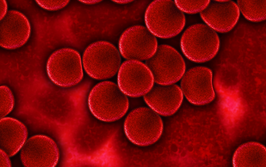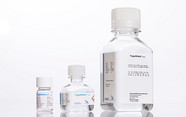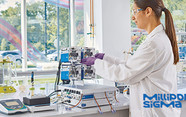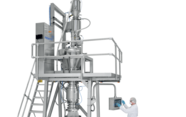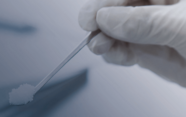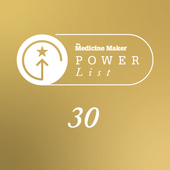Integrating Technology and Robotics in CGT Manufacturing
How the right partnerships are helping streamline CGT manufacturing through robotics and digital tools.
| 7 min read | Interview

Cytiva and Cellular Origins have announced a technology partnership to help improve cell therapy production. The collaboration integrates Cytiva’s automated Sefia platform with Cellular Origins’ robotic system, Constellation, to help CGT manufacturers scale production while preserving the processes established during discovery and clinical trial phases. According to the companies, the approach should allow for improved productivity.We spoke with Jason Jones, Global Business Development Lead, Cellular Origins, to find out more.
How does this collaboration align with the long-term vision for the CGT industry?
The industry has shown that it can bring these therapies to clinic, and that these therapies can hugely benefit patients over and above the current standard of care. Now, the industry must produce large enough quantities to benefit all eligible patients and prove to shareholders and investors that there is a viable business to be had.
Let’s be frank, we only have a limited amount of time before the interest of those that fund the sector moves away. I believe that tackling the manufacturing challenges must be done in partnership, not isolation. The surest way is to use proven technologies in innovative ways. Without robotics and digitization, it is difficult to see how the industry can multiply production without multiplying a huge amount of manufacturing space and filling it with a hugely multiplying number of skilled staff. This is unfeasibly huge.
What challenges do you foresee in achieving seamless digital interconnection?
Lack of connection, both in technology automation and the digital systems that run and monitor them, is a big challenge. We are working together to fully automate the use of Cytiva’s technology digitally – by integrating our software to enable the operation and the data handling of their devices within our system – and physically, by enabling robotic set up, operation and connection of those devices into a whole, modular, and configurable process that might include other devices of theirs or from other technology companies. The overarching challenge of digital integration has been, until now, the lack of absolute necessity.
In what ways will the removal of manual interventions between CGT manufacturing steps enhance production efficiency and product consistency?
It is unfair to say that the manufacturing technology in CGT hasn’t developed – it has. However, it has done so in isolated islands of automation that are connected by highly trained manufacturing staff. Staff need to set up materials on each device and run through the setup of the consumables, manually entering process parameters, manually recording materials and process data, and manually de-installing materials before transferring to the next unit operation and the manual operation of the next device and consumable.
It is fundamentally understood from other industries that, at best, every human operation brings variation, and, at worst, brings human error and failures. The incidence rate or degree of variation now will be multiplied 10 times, and then 100 times, as we scale. We need standardization through automation. Robots will conduct every step of every process the exact same way every time, in every process for every product. This is not something new to other industries, but it is a degree of standardization unseen in CGT.
Robots controlled by the digital system can record the data of every second of every movement and step in every process for every product, accumulating an unprecedented amount of data in manufacturing, and empowering complete quality control and full process optimization when used with AI technologies.
How will the combined solution address limitations in manufacturing capacity and variability?
Our combined technologies will allow us to manufacture more products for a larger number of patients, without the need for sprawling facilities or an unsustainable increase in staff numbers. The aim is to avoid overwhelming operational costs that would make the business model unviable. With fully automated manufacturing, we can achieve 24/7 production in smaller, more efficient facilities, significantly reducing the number of staff required. This solution bridges the gap between the thousands of therapies we currently produce and the tens of thousands, or even hundreds of thousands, needed in the future. It will make cell therapies a mainstream medicine.
What steps are being taken to ensure that the integrated platform complies with cGMP?
An essential question and one that not all innovators in automation get quite right. Currently, commercial therapies are approved with established processes and appropriate technologies. Considering the gulf in production requirement between clinical studies (which might only require 100-200 products to be manufactured in a year) and an approved therapy hoping to reach 30-50,000 patients a year, the urgent need to scale is in therapies that are already approved or near approval. However, change is risky in GMP manufacturing, so process changes need to be minimal at this late stage of therapy development to avoid new comparability studies. We need to shift gear, not process. This is fundamental to our ethos at Cellular Origins: to change manufacturing scale without changing the process and certainly not to change the product. This is why our partnership with Cytiva is so important. The partnership will allow us to fully automate the technologies and processes that are already used in these late stage or commercial products with the same fluid pathways, same cell-contacting materials, and same product journey from clinical through to manufacturing.
How do you plan to navigate the regulatory landscape to facilitate the adoption of this technology by therapy developers?
Simply put: through collaboration. Ultimate responsibility for the product and the process lies with the therapy developer. However, those who provide the manufacturing technology owe a responsibility to developers to make approval of processes, manufacturing, and CMC as sure as possible. We thus need to provide manufacturing technologies and methodologies that can scale with therapy developers’ needs without changes as scale becomes a priority. Of course, early conversations with the authorities will facilitate this.
What has been the initial response from potential customers and partners regarding this collaboration?
There’s been a steadily growing excitement and validation of the belief that the industrialization of CGT manufacturing is becoming a reality. While there's still much work to be done, there's now a sense that we’re on the right path to achieving it. The partnership between companies like Cytiva and Cellular Origins, along with the broader industry's ability to collaborate, provides a clear way forward where there was once uncertainty. Therapy developers won’t need to reinvent the wheel with new technologies to scale. Instead, they can continue their journey through process development and clinical manufacturing, only transitioning to higher levels of automation and scale when the need arises. This is generating significant excitement and possibly even a sense of relief across the sector.
We are already talking with several later-stage therapy developers. Each therapy developer has their own process and selects from a small pool of unit operation technologies offered by a few leading companies, all of which have proven reliability in terms of operation, quality, and supply. Our approach is agnostic to the specific technologies we integrate and driven by the needs of the therapy developers who require full automation. This means we are collaborating with all the leading technology providers to meet the requirements of the developers we’re in discussions with. Industry leadership and partnerships are key to addressing these challenges, and the flexibility, applicability, and configurability of the right technology is generating a lot of interest and encouraging further engagement.
Are there any plans to incorporate additional technologies or expand the collaboration to address other aspects of CGT manufacturing?
Yes, and yes! We are incorporating additional technologies. Most processes involve multiple technologies, so we need to progress integrations with all the leading devices, prioritising the most widely used and proven ones to reach the greatest number of therapy developers. There are more partnerships to come, but it's important to remain flexible, future-proof, and able to incorporate new process technologies as their value and benefits are demonstrated. We are already collaborating with several novel and innovative technologies within our wider partner ecosystem, discussing their application at scale and within our platform.
Expanding applicability within manufacturing is not our only focus. While it’s the most immediate challenge and our primary concern right now, solving one bottleneck in the vein-to-vein journey of these therapies often exposes others. For instance, if we solve the manufacturing bottleneck and greatly increase production capacity, we will need to supply the materials for that manufacturing in similarly greater quantities. This will require scaling warehousing, storage, material transfer, unboxing, delivery to manufacturing units, and preparation for production – all of which can benefit from robotic automation. Similarly, as production levels rise, so will the need for product analysis, process controls, sampling, delivery, and analysis. These areas will require further automation, as well as full integration of digital and physical systems.
What future developments can stakeholders anticipate from this partnership?
I think people will be surprised at just how quickly we are progressing. It is already a sight to behold to see a robot installing tubing sets. Observers can look forward to seeing this soon happening on a factory level. We’re at various stages of integrating or preparing to integrate more technologies, but the real milestone will be proving comparability in biology, demonstrating the potential for scaled output, increasing standardization, and providing access to rich process data. Time is short to solve these manufacturing problems, but we have a correspondingly ambitious schedule to do so.



